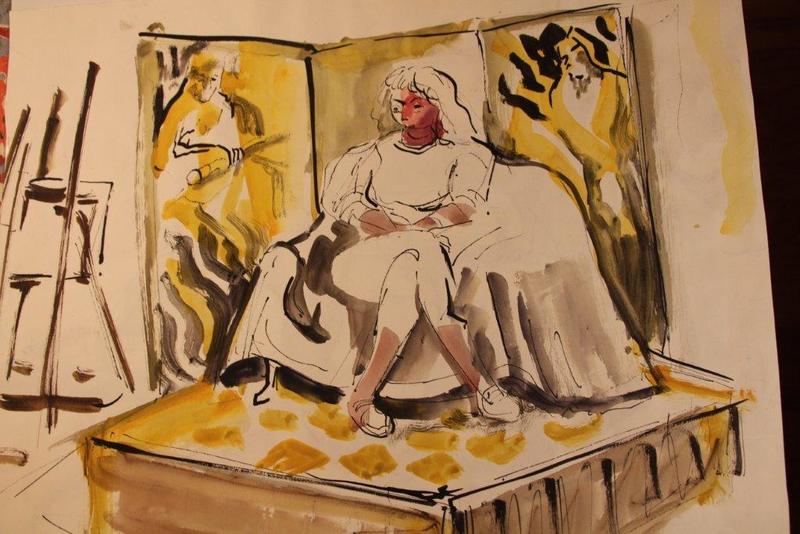This is the second of a three-part series on Howard Schroeder on the eve of the 20th anniversary of his death.
For 50 years, Howard Schroeder worked arduously to see the art community organize and grow.
Fate has a way of uniting people, as it did Howard Schroeder and Louise Corkran.
Schroeder, a young artist stationed at Fort Miles during World War II, received an honorary invitation to join the Rehoboth Art League, an art colony that Corkran had recently created with her husband, Col. Wilbur Corkran.
“I marveled at her dedication to the running of the Rehoboth Art League. It never seemed to be out of her mind,” the artist noted in a 1994 book about his work called “Schroeder: A Man and His Art.”
Not long after their meeting in 1944, Schroeder began to give art lessons at the Rehoboth Art League. His own dedication to the league soon became evident. He held virtually every position on the board, and for more than 30 years worked with determination to see the facility raise its visibility and expand into a center that drew respected artists from all over the East Coast.
The late Jack Lewis, another Delaware legendary artist and a close friend of Schroeder, was quoted in the same book as saying that Schroeder and Corkran oversaw the birth of the arts at the beach through years of perseverance and hard work.
“Singlehandedly, he hung many of the early shows and exhibits ... and insisted that expansion was the way for the league,” Lewis wrote of Schroeder. Others have credited Schroeder for rejuvenating the Rehoboth Art League.
In 1949, Schroeder started the Open Studio Sketch Group to give artists an opportunity to gather once a week to sketch or paint live models, an idea inspired by a group he had belonged to as an artist in New York City, his birthplace. The group remains active today and has been renamed the Howard Schroeder Sketch Group.
Some of the paintings Schroeder created at the sketch group will be on display Saturday, Sept. 20, at an exhibit and sale at the Inn at Canal Square to benefit the new Lewes Public Library. The show will be open from 11 a.m. to 3 p.m. with no charge for admission.
Among the most coveted pieces at the show is a 1990 double-sided watercolor featuring a view of the sketch group at work. Also on display at the show will be a female nude watercolor created in 1965. For many years, Schroeder drove regularly from Lewes to New York City to paint nude models in any of numerous artists’ classes. Models (not always nude) at the Rehoboth Art League consisted of family, friends and oftentimes “characters” Schroeder met in Lewes or Rehoboth.
Schroeder also inspired a group of students from Lewes to continue painting under his tutelage even though his class had ended. They eventually formed the Cape Artists, whose gallery exists today on Third Street in Lewes.
“As teacher, mentor and a very active participant in the league’s many arts activities, Howard Schroeder has meaningfully contributed to the advancement of hundreds of artists in the area,” said the late Charles Palmer, a former art league executive director.
Rehoboth Art League has organized several exhibitions of Schroeder’s work, including one in 1985 that drew viewers and collectors from along the Eastern Seaboard.
In 2012, Schroeder’s children gave the art league a collection of 18 drawings and paintings representing Schroeder’s sketch group work from 1974 to 1993.
A plaque placed by RAL on one of those paintings reminds other artists and visitors of Schroeder’s “profound love of sketching, deep passion for teaching, and devotion to the Rehoboth Art League.”
To learn more about the Sept. 20 Schroeder exhibit, go to greaterlewesfoundation.org/Schroeder. To read more about Howard Schroeder, visit howardschroederart.com.
Editor’s note: Look for Part 3 of the series in the Sept. 26 issue. Schroeder and his artistic contemporary Jack Lewis painted the best of southern Delaware scenes and landscapes. This story will look at their friendship and highlight some of their most memorable images of the region.




















































